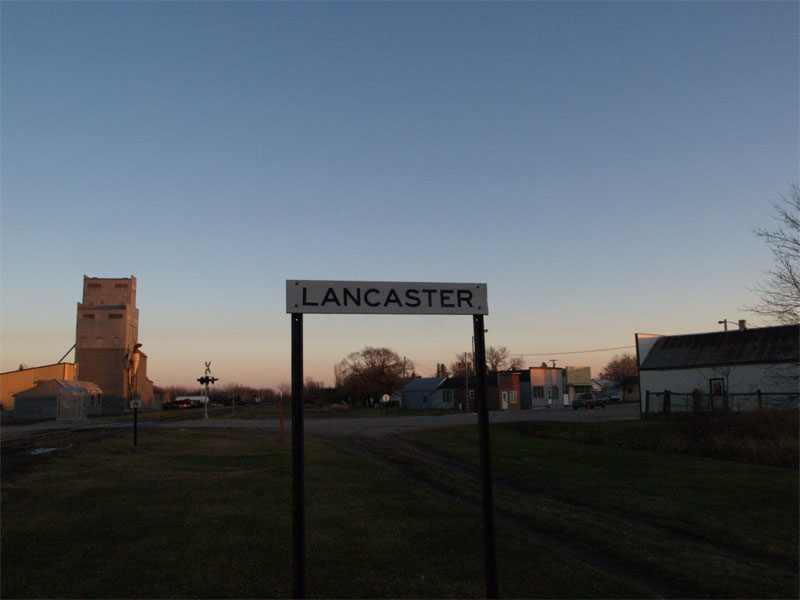Slow news day. Let’s see if I can cobble something together.
I opened up Google Analytics in map mode and noticed a small, isolated dot. It fell suspiciously near the Minnesota-Manitoba-North Dakota Highpoint. So I drilled down a little further and found a visitor from the tiny town of Lancaster, Minnesota. I’d never heard of this particular Lancaster but I’m always interested in learning about new places. Maybe I should check it out and see why it mattered.
Lancaster

It seems to be a nice enough place, with wide streets, a water tower and a grain elevator in the distance (map). There’s not much else to know. It’s an agricultural community like so many others out here on the eastern edge of the Great Plains. The Soo Line railroad laid down tracks through here and someone built a hotel. This led to the establishment of a town in 1904 that grew to 363 people by the time the 2000 U.S. Census took place. It felt like a typical story.
Lancaster also receives some attention as the gateway to a border crossing with Canada a few miles up Highway 59. Visitors can cross from 8:00 AM to 10:00 PM, seven days a week.
So why did it become Lancaster? The ever-powerful Wikipedia provided an explanation. “Lancaster was named after an official of the Soo Line, believed to have come from Lancashire County in England.”
Lancashire
So let’s cross the Atlantic Ocean to England, and head towards Lancashire County. This serves as an excellent excuse to fuse two completely different topics together that wouldn’t ordinarily fill a blog posting individually.
I recently came across an interesting website called The Mountains of England and Wales. Regular readers know that I have a fascination with counties so I went immediately to the site’s County and Unitary Authority Tops page. Let’s take a look at the Current County/UA Tops and examine Lancashire.
It appears that the County Top for Lancashire is Green Hill at 628 metres (2,060 feet). Google Street View provides a decent image of the vista.
I’m not sure when I’ll have an opportunity to climb any of these county tops but I had a lot of fun wandering around the website. I guess I’ll have to stick with their counterparts, the county highpoints of the United States for now.

Leave a Reply